2-Hydroxyethyl methacrylate
Synonym(s):1,2-Ethanediol mono(2-methylpropenoate);2-Hydroxyethyl 2-methylpropenoate, HEMA, Methacrylic acid 2-hydroxyethyl ester;2-Hydroxyethyl methacrylate;Glycol methacrylate;HEMA
- CAS NO.:868-77-9
- Empirical Formula: C6H10O3
- Molecular Weight: 130.14
- MDL number: MFCD00002863
- EINECS: 212-782-2
- SAFETY DATA SHEET (SDS)
- Update Date: 2025-12-17 09:49:47

What is 2-Hydroxyethyl methacrylate?
Chemical properties
colourless liquid
The Uses of 2-Hydroxyethyl methacrylate
2-Hydroxyethyl methacrylate is used for preparation of hydrophilic polymers for biomedical devices.
The Uses of 2-Hydroxyethyl methacrylate
2-Hydroxyethyl methacrylate is the methacrylic monomer for use in UV inks, adhesives, lacquers, dental materials, artificial nails, etc.
The Uses of 2-Hydroxyethyl methacrylate
2-Hydroxyethyl methacrylate is used in UV-curable inks and coatings. It is also used in adhesives, artificial nails, dental materials and lacquers. In dentistry, it is one of the main volatile acrylates along with methyl methacrylate. Further, it is used as a monomer in the synthesis of polymers for dental prosthetics and for geotechnical grouting in construction work.
What are the applications of Application
2-Hydroxyethyl methacrylate is wide applications for drug delivery
Definition
2-Hydroxyethyl methacrylate is an enoate ester that is the monomethacryloyl derivative of ethylene glycol.
General Description
2-Hydroxyethyl methacrylate (HEMA) is biocompatible in nature. Polymeric hydrogel scaffold can be produced by polymerizing HEMA in water.
Hazard
30% grade (with xylene): Flammable, moderate fire risk.
Environmental Fate
2-Hydroxyethyl methacrylate's production and use in acrylic resins, enamels, and as a binder for non-woven fabrics may result in its release to the environment through various waste streams. If released into the air, a vapor pressure of 0.126 mm Hg at 25 °C indicates that 2-hydroxyethyl methacrylate will exist solely as a vapor in the ambient atmosphere. Vapor-phase 2-hydroxyethyl methacrylate will be degraded in the atmosphere by reaction with photochemically-produced hydroxyl radicals; the half-life for this reaction in air is estimated to be 16 hours. If released to soil, 2-hydroxyethyl methacrylate is expected to have very high mobility based upon an estimated Koc of 43. Volatilization from moist soil surfaces is not expected to be an important fate process based upon an estimated Henry's Law constant of 4.6X10-9 atm-cu m/mole. 2-Hydroxyethyl methacrylate is not expected to volatilize from dry soil surfaces based on its vapor pressure. If released into water, 2-hydroxyethyl methacrylate is not expected to adsorb to suspended solids and sediment in the water column based on the estimated Koc. 2-Hydroxyethyl methacrylate reached 92-100% of its theoretical BOD in 2 weeks using an activated sludge inoculum. Volatilization from water surfaces is not expected to be a necessary fate process based on this compound's estimated Henry's Law constant. An estimated BCF of 1.3 suggests the potential for bioconcentration in aquatic organisms is low. Hydrolysis of 2-hydroxyethyl methacrylate may be a significant process under basic conditions based upon a hydrolytic half-life of 4 hours at pH 11 for the structurally similar butyl acrylate; half-lives for butyl acrylate at pH 7, 8, and 9 were 4 years, 150 days, and 15 days, respectively. Occupational exposure to 2-hydroxyethyl methacrylate may occur through inhalation and dermal contact with this compound at workplaces where 2-hydroxyethyl methacrylate is produced or used. The general population may be exposed to 2-hydroxyethyl methacrylate via inhalation or dermal contact with acrylic resins or enamels containing this compound.
Metabolism
2-hydroxyethyl methacrylate (HEMA) is a monomer based on methacrylic acid (MAA) used to produce biomaterials such as dental adhesive and composite resins. The process of polymerization, which is run in situ, is always incomplete, resulting in the presence of free monomers in the oral cavity. Moreover, monomers can be released from polymer-based tooth restorations through mechanical shearing and enzymatic degradation of polymers. They may penetrate the pulp through microchannels in the dentin structure. HEMA, like many of MAA-based monomers, is an ester, so it can be targeted by esterases when in organism and can undergo degradation. The main product of HEMA hydrolysis is MAA, which may undergo further degradation producing several intermediates of potential biological activity[1].
Purification Methods
Dissolve the ester in water and extract with n-heptane to remove ethylene glycol dimethacrylate (checked by gas-liquid chromatography and by NMR) and distil it twice under reduced pressure [Strop et al. J Phys Chem 80 694 1976]. [Beilstein 2 IV 1530.]
Properties of 2-Hydroxyethyl methacrylate
| Melting point: | -12 °C |
| Boiling point: | 67 °C3.5 mm Hg(lit.) |
| Density | 1.073 g/mL at 25 °C(lit.) |
| vapor density | 5 (vs air) |
| vapor pressure | 0.01 mm Hg ( 25 °C) |
| refractive index | n |
| Flash point: | 207 °F |
| storage temp. | 2-8°C |
| solubility | Chloroform, Methanol (Slightly) |
| form | Liquid |
| pka | 13.83±0.10(Predicted) |
| color | Clear |
| Odor | Ester like |
| Water Solubility | soluble |
| Sensitive | Air Sensitive |
| BRN | 1071583 |
| Stability: | Unstable - may polymerize in the absence of stabilizer. May be stabilized with, or contain small amounts of, diethylene glycol monomethacrylate, di(ethylene glycol)dimethacrylate, methacrylic acid. Incompatible with strong oxidizing agents, free radical initiators, peroxides, steel. Closed containers may explode if heated due to runaway polymer |
| CAS DataBase Reference | 868-77-9(CAS DataBase Reference) |
| NIST Chemistry Reference | 2-Hydroxyethyl methacrylate(868-77-9) |
| EPA Substance Registry System | 2-Hydroxyethyl methacrylate (868-77-9) |
Safety information for 2-Hydroxyethyl methacrylate
| Signal word | Warning |
| Pictogram(s) |
 Exclamation Mark Irritant GHS07 |
| GHS Hazard Statements |
H315:Skin corrosion/irritation H317:Sensitisation, Skin H319:Serious eye damage/eye irritation |
| Precautionary Statement Codes |
P261:Avoid breathing dust/fume/gas/mist/vapours/spray. P264:Wash hands thoroughly after handling. P264:Wash skin thouroughly after handling. P272:Contaminated work clothing should not be allowed out of the workplace. P280:Wear protective gloves/protective clothing/eye protection/face protection. P302+P352:IF ON SKIN: wash with plenty of soap and water. P305+P351+P338:IF IN EYES: Rinse cautiously with water for several minutes. Remove contact lenses, if present and easy to do. Continuerinsing. |
Computed Descriptors for 2-Hydroxyethyl methacrylate
| InChIKey | WOBHKFSMXKNTIM-UHFFFAOYSA-N |
2-Hydroxyethyl methacrylate manufacturer
Sona Enterprise
Manali Traders
Shree Mahalaxmi Chemicals
Global Impex.
Manav Biochem Impex Private Limited
New Products
4,4-Difluoropiperidine hydrochloride tert-butyl 9-methoxy-3-azaspiro[5.5]undecane-3-carboxylate Indole Methyl Resin N-Isopropylurea N,N-Dicyclohexylcarbodiimide(DCC) MELDRUMS ACID 5-METHYLISOXAZOLE-4-CARBOXYLIC ACID Magnessium Bis glycinate Zinc ascorbate 1-bromo-2-butyne 2-acetamidophenol 9(10H)-anthracenone Erythrosin B, 4-Piperidinopiperidine 2-((4-morpholinophenylamino) (methylthio) methylene) malononitrile 2,4-dihydroxybenzaldehyde 3-(4-morpholinophenylamino)-5-amino-1H-pyrazole-4-carbonitrile Methyl 2-methylquinoline-6-carboxylate 2,6-dichloro-4-nitropyridine 4-Bromo-2-chlorobenzonitrile 2-(benzylamino)acetic acid hydrochloride 4-(tert-Butoxycarbonylamino)but- 2-ynoic acid 3,4-dihydro-2H-benzo[b][1,4]dioxepine 1-Phenyl-1-cycloprppanecarboxylicacidRelated products of tetrahydrofuran
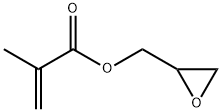
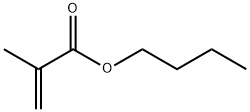
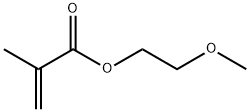
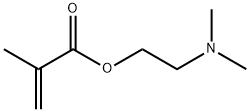



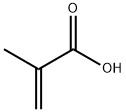
You may like
-
 2-HYDROXY ETHYL METHACRYLATE 99%View Details
2-HYDROXY ETHYL METHACRYLATE 99%View Details -
 2-Hydroxyethyl methacrylate CAS 868-77-9View Details
2-Hydroxyethyl methacrylate CAS 868-77-9View Details
868-77-9 -
 Hydroxyethyl Methacrylate CASView Details
Hydroxyethyl Methacrylate CASView Details -
 2 Hydroxyethyl Methacrylate, Grade: Industrial, Purity: 99View Details
2 Hydroxyethyl Methacrylate, Grade: Industrial, Purity: 99View Details
868-77-9 -
 2 Hydroxyethyl Methacrylate Hema, Grade: Indl, Purity: 99View Details
2 Hydroxyethyl Methacrylate Hema, Grade: Indl, Purity: 99View Details
868-77-9 -
 2 Hydroxyethyl Methacrylate, For Make Polymers, Grade: Technical GradeView Details
2 Hydroxyethyl Methacrylate, For Make Polymers, Grade: Technical GradeView Details
868-77-9 -
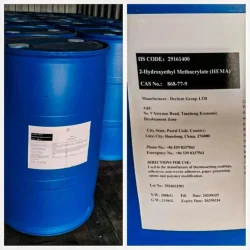 2 Hydroxy Ethyl Methacrylate 2 Hema, For Industrial, Grade: TechnicalView Details
2 Hydroxy Ethyl Methacrylate 2 Hema, For Industrial, Grade: TechnicalView Details
868-77-9 -
 Liquid Hydroxyethyl Methacrylate, Grade Standard: Reagent Grade, Packaging Type: Plastic Drum,Metal DrumView Details
Liquid Hydroxyethyl Methacrylate, Grade Standard: Reagent Grade, Packaging Type: Plastic Drum,Metal DrumView Details
868-77-9
